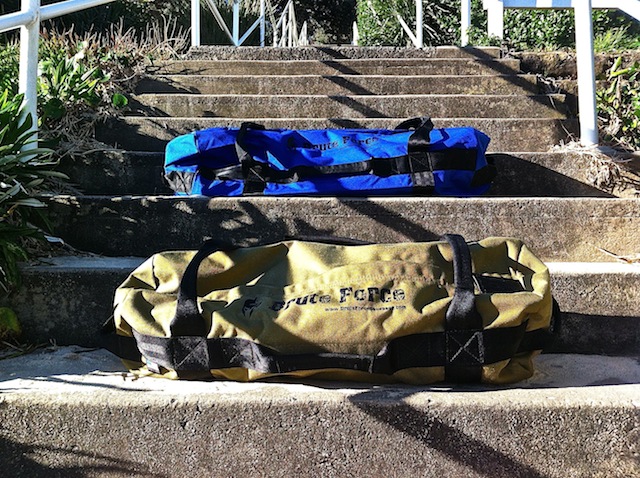
While we love our daily dose of cardio, too much of it can descend us into absolute boredom. A good workout is equal parts endurance training and muscle building, with a light dusting of cardio.
Sound familiar? If not, allow us to welcome you into the world of heavy bag workouts, where you can get your heart rate up and work your body to satisfying exhaustion all day, every day.
More than throwing punches and bouncing on your tiptoes, training focuses on developing and improving boxing combos. So, not only could it help you work your way to a fitter physique, but it could also make you one hell of a boxer.
Where should you start, though? There’s several beginner bag workouts to incorporate into your fitness routine.
What’s a Heavy Bag Workout, Anyway?
First off, let’s start by defining what a “heavy bag” is. These are cylinder-shaped bags hung in front of a boxer. They pack a lot of weight since fighters are expected to train with bags no less than half their weight. There’s no need to be specific about it; you aim for the nearest half and round up. That gets the job done, regardless.
While they’re both kinds of boxing training equipment, heavy bags and speed bags are not synonymous, despite a few thinking they are. Speed bags are air-filled and designed for reflex and accuracy testing. These bags can move quite a lot when punched.
Heavy bags can be as tall as five feet and are built to take some intense beating. Designed to build strength and resilience, these bags are the ideal every day hitting partners. They don’t take too kindly to tender hands, so grow those calluses first before graduating to these monstrosities. Once you’ve built up some tolerance, these bags should allow for optimal improvement.
Muay Thai also has its own version of a heavy bag, and it can provide as good a workout as the traditional boxing heavy bags. They’re longer and narrower and can be positioned closer to the ground to practice various kicks.
Uppercut bags are also a thing; they’re either teardrop- or wrecking-ball-shaped to accommodate fast, successive punches. There are also freestanding bags built on a steady, weighted base. As good as suspended bags, these ground-based bags are as effective for daily drills of varying intensities.
Beginner Heavy Bag Workouts
You can either incorporate these workouts into your training individually, focusing on one per day, or combine them for daily comprehensive heavy bag training. Whatever the case, it is imperative to begin your workout with a warm-up.
A little shadowboxing should get the heart thumping and blood pumping in no time. Get your wraps and gloves on, start bouncing on your toes, and imagine boxing with an opponent. Mix up the punches and commit to each as if you were in a real sparring match. A few minutes of that and you should be good for sessions of the following:
1. Basic Training
Unless this is your only heavy bag workout, make sure to start your series of bag workouts with this particular one. The basic training workout involves going through some combos and footwork strategies, the foundations of your boxing skills. Take time to focus on each move, as this will be critical to mastering the sport.
The ideal way to go about the initial round of heavy bag punching is to:
- Punch all-out for one minute. Vary your punches as much as possible and commit to each one. After executing a punch, revert to the “guard” position and keep your arms up.
- Align your movements with the bag’s movements, throwing punches when your target is at a reachable distance. This hones your estimation skills.
- Proceed to do one-minute hooks per arm. These are close-range moves, so move closer to the bag before executing.
- Do some speed punching for one minute.
- The feet should move constantly.
- Punches should be swift and sure.
- Keep slides tight, and don’t stop the barrage until the minute is done.
2. Heavy Bag HIIT Workout
This high-intensity interval training with a heavy bag is sure to provide a most fulfilling workout. It involves hitting fast and hard until the interval is over. But a short breather is all you get because you’d need to be at it again for what’s left of your 30-minute training.
Sounds tough, right? Well, it’s also worth it.
- Warm up first, as usual. Start throwing fast combos immediately after for 20 seconds.
- Give yourself a 10-minute breather but keep your feet moving.
- Repeat for seven more rounds.
3. Fancy Footwork
No, this workout is not going to involve a treadmill, thank goodness. It’s just you, the bag, and a set of footwork skills that need training and development. You know your combos, and this is the perfect time to work on them. Just remember to do the following:
- Get yourself adequately warmed up.
- Start throwing some combos at the bag.
- Get your footwork going, moving around the bag as if it was a real opponent.
- Do this for three minutes straight.
- Give yourself a full minute’s rest.
- Complete another three rounds of the workout.
4. Accuracy Workout
Accuracy is paramount in boxing, so it makes sense to have a heavy bag workout specifically for it. Sparring with a fellow boxer should hone your precision to near-perfection, but it typically isn’t applicable for beginners. You’ll want to start sparring with a heavy bag, which can prove to be a close-enough substitute.
Here are a few points to keep in mind when practicing accuracy on a heavy bag:
- Stick some targets on the heavy bag.
- Do your warm-up.
- Move with the bag.
- Do your best to land punches only on the bag’s marked areas.
- Do another three rounds of this after a minute’s rest.
Bags Are Best for Boxing Beginners
Very rarely are boxing beginners subjected to sparring practices with fellow fighters. Unless you intend to become a professional or are a prodigy, bag workouts tend to comprise the beginning stages of your journey. In any case, any of the workouts above should prove a great starting point for anyone looking to incorporate boxing into their daily routines.


















Follow Us